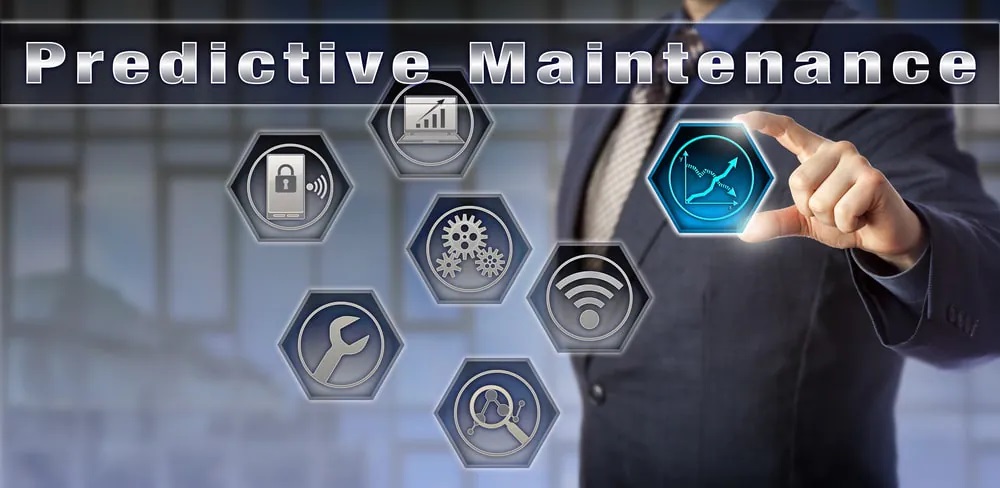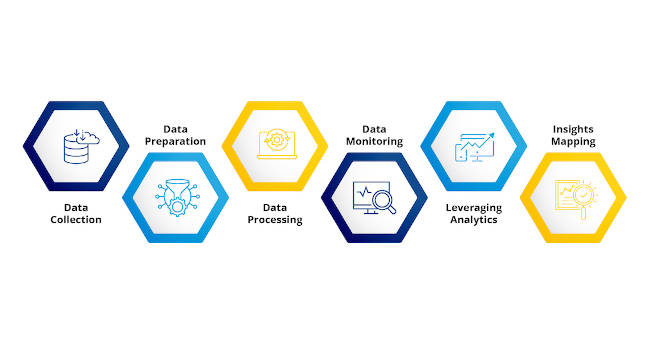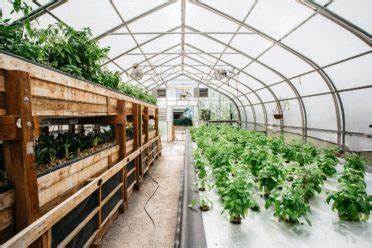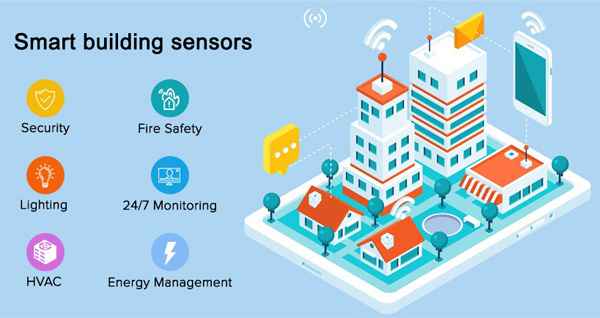Smart Building Architectural Trends: Creating Sustainable and Efficient Buildings Introduction Smart buildings have gained significant attention in architectural trends, revolutionizing the design and operation of buildings. Equipped with advanced technologies, these buildings optimize energy consumption, enhance occupant comfort, and improve overall efficiency. In this comprehensive article, we will explore the relevance and importance of smart building architectural trends, along with key concepts, case studies, current trends, challenges, and future outlook. Historical Background Building automation systems laid the foundation for smart building architecture. Early pioneers recognized the potential of integrating technology into buildings to improve functionality and sustainability, paving the way…
Author: jenks2026
Designing for Accessibility in Smart Buildings: Creating Inclusive Spaces for All Introduction In today’s rapidly evolving world, the concept of smart buildings has gained significant traction. These technologically advanced structures are designed to enhance efficiency, convenience, and sustainability. However, it is crucial to recognize that smart buildings should also prioritize accessibility. This article explores the importance of designing for accessibility in smart buildings and the relevance of this topic in our society. Historical Background Origin and Evolution of Smart Buildings Smart buildings have come a long way since their inception. Initially, these structures were primarily focused on automating tasks such…
HVAC Automation for Climate Control: Optimizing Energy Efficiency and Indoor Comfort Introduction HVAC automation plays a crucial role in climate control, ensuring optimal indoor conditions while minimizing energy consumption. This article explores the historical background, key concepts, benefits, implementation, case studies, current trends, challenges, and future outlook of HVAC automation for climate control. Historical Background The evolution of HVAC systems and their manual control laid the foundation for the emergence of automation technologies. With advancements in technology, climate control became a key aspect of HVAC automation, revolutionizing the way buildings are cooled, heated, and ventilated. Key Concepts and Definitions HVAC…
Smart Parking Solutions: Revolutionizing Urban Mobility Introduction Smart Parking Solutions have emerged as a game-changer in urban mobility, addressing the growing challenges of traffic congestion and limited parking space. This article explores the historical background, key concepts, benefits, integration with smart cities, case studies, current trends, challenges, and future outlook of Smart Parking Solutions. Historical Background The evolution of parking systems can be traced back to the introduction of parking meters in the early 20th century. However, it was the integration of technology that revolutionized parking solutions. The advent of automated parking systems and the implementation of smart technologies paved…
Occupancy Tracking and Space Utilization: Optimizing Efficiency and Productivity Introduction The importance and relevance of Occupancy Tracking and Space Utilization cannot be understated in today’s rapidly evolving workplace environment. As businesses strive to maximize their resources and improve efficiency, understanding how space is utilized within their facilities becomes crucial. By effectively tracking occupancy and optimizing space utilization, organizations can unlock numerous benefits. In this article, we will delve into the historical background, key concepts, main discussion points, and future outlook of Occupancy Tracking and Space Utilization. Historical Background To truly grasp the significance of Occupancy Tracking and Space Utilization, it…
Predictive Maintenance for Building Equipment: Optimizing Efficiency and Reliability Introduction Predictive Maintenance for Building Equipment is a proactive approach that utilizes data analytics and predictive algorithms to optimize the maintenance of building equipment. This strategy aims to reduce downtime, extend equipment lifespan, and optimize maintenance schedules. Historical Background Maintenance practices in buildings have evolved significantly over time. Initially, maintenance was primarily reactive, meaning repairs were only carried out after equipment failure. However, with the advancements in technology and the growing importance of efficiency and reliability, maintenance practices have shifted towards more proactive approaches, including predictive maintenance. Key Concepts and Definitions…
The Power of Real-Time Monitoring: Optimizing Building Performance Introduction Real-time monitoring of building performance has become increasingly crucial in today’s fast-paced world. This article delves into the definition, importance, and structure of real-time monitoring, providing insights into its historical background and key concepts. Historical Background The evolution of building performance monitoring has paved the way for real-time monitoring technologies. This section explores the progression and significance of real-time monitoring in enhancing building performance. Key Concepts and Definitions Building performance metrics and indicators play a vital role in assessing and improving a building’s efficiency. Discover the significance of real-time data acquisition…
Introduction In today’s interconnected world, the concept of smart buildings has gained significant attention. These buildings are equipped with advanced technologies that enhance convenience, energy efficiency, and productivity. However, with the integration of technology comes the crucial aspect of data privacy and security. This article explores the importance of data privacy and security in smart buildings and why it is essential to study and understand this topic. Historical Background Smart buildings have evolved over the years, transforming from traditional structures into interconnected ecosystems. The integration of technology has revolutionized the way we interact with buildings, offering numerous benefits. However, early…
Introduction Utilizing data for energy benchmarking is a crucial practice in today’s energy-conscious world. With rising concerns about climate change and the need for sustainable development, energy benchmarking provides a systematic approach to enhance energy efficiency and reduce environmental impact. This article explores the relevance and importance of energy benchmarking, highlighting its cost-saving potential, environmental benefits, and compliance with regulations and standards. Historical Background The evolution of energy benchmarking showcases its growing significance in the energy sector. Early applications and adoption of energy benchmarking paved the way for milestones and advancements in technology. Today, energy benchmarking has become an essential…
Maximizing ROI in Smart Building Investments Introduction In today’s technology-driven world, smart building investments have gained significant attention. This article explores the concept of ROI analysis in smart building investments, highlighting its relevance and importance. It provides an overview of the article’s structure, ensuring readers have a clear understanding of what to expect. Historical Background As smart building investments continue to evolve, understanding their historical background is crucial. This section delves into the evolution of these investments, shedding light on early adoption and the challenges faced. It examines the growth and current state of the industry, showcasing its immense potential.…
Energy Reduction Success Stories: Inspiring Change for a Sustainable Future Introduction Success stories in energy reduction have become increasingly prevalent in recent years, as individuals, organizations, and governments recognize the urgent need for sustainable practices. In this article, we aim to delve into the historical background, key concepts, main discussion points, case studies, current trends, challenges, and future outlook surrounding energy reduction. By exploring government initiatives, technological advancements, successful strategies in industries and communities, and real-world examples, we aim to highlight the effectiveness of energy reduction efforts and inspire readers to contribute to a greener future. Historical Background Energy consumption…
Vertical Farming: Navigating the Challenges of Food Waste Introduction Vertical farming is an innovative approach to agriculture that involves cultivating crops in vertically stacked layers, using techniques such as hydroponics, aeroponics, and aquaponics. By utilizing vertical space and advanced technologies, vertical farming aims to address the challenges of traditional farming, including land limitations, water scarcity, and weather dependency. In addition to increasing food production, vertical farming also holds great potential in reducing food waste. This article explores the challenges of food waste and how vertical farming can contribute to its reduction. Historical Background Vertical farming has its roots in the…
Vertical Farming and Crop Diversity: Paving the Way for a Sustainable Future Introduction Vertical farming has emerged as a revolutionary solution to the challenges posed by traditional agriculture methods. By utilizing vertical space and employing innovative techniques, this practice has the potential to enhance crop diversity while addressing issues such as land scarcity and climate change. In this article, we will explore the historical background, key concepts, and benefits of vertical farming for crop diversity, as well as the role of technology in its advancement. Historical Background The concept of vertical farming can be traced back to the Hanging Gardens…
Vertical Farms: A Sustainable Solution for Climate Change Adaptation Introduction Vertical farming is an innovative agricultural practice that has gained significant attention for its potential in climate change adaptation. By utilizing vertical space and advanced technologies, vertical farms offer a sustainable solution to address the challenges posed by climate change. This article explores the historical background, key concepts, main discussion points, case studies, current trends, challenges, and future outlook of vertical farms in climate change adaptation. Definition of Vertical Farms and Climate Change Adaptation Vertical farms are indoor farming systems that use vertically stacked layers to grow crops in a…
Vertical Farming: Bridging Science Fiction and Reality Introduction Vertical farming has emerged as an innovative solution to address the challenges of traditional agriculture by utilizing vertical space. This article explores the concept of vertical farming and its intersection with science fiction, delving into its historical background, key concepts, and the main discussion points surrounding this revolutionary approach to food production. Historical Background The origins of vertical farming can be traced back to the early 20th century, when visionary thinkers proposed the concept of multilevel agriculture. However, it wasn’t until the 1990s that the term “vertical farming” was introduced by a…
Vertical Farming: Revolutionizing Food Production for a Sustainable Future Introduction Vertical farming is an innovative agricultural practice that offers a promising solution to the challenges of food production in a crowded and resource-constrained world. By utilizing vertical space and advanced technologies, this groundbreaking approach addresses the growing demand for fresh and nutritious produce. In this article, we will explore the historical background, key concepts, advantages, case studies, current trends, challenges, and future outlook of vertical farming. Historical Background The concept of vertical farming dates back to the early 20th century when visionaries in architecture and science began envisioning ways to…
Vertical Farming: Revolutionizing Sustainable Farm-to-Table Practices Introduction Vertical Farming is an innovative agricultural practice that has gained significant attention in recent years. It involves growing crops in vertically stacked layers, utilizing limited space and resources while maximizing yields. This article explores the concept of Vertical Farming and its relevance in promoting sustainable farm-to-table practices. It highlights the importance of Vertical Farming in addressing food security, urbanization, and environmental sustainability. Historical Background The origins of Vertical Farming can be traced back to the early 20th century when researchers and visionaries began exploring alternative methods of food production. However, it wasn’t until…
The Future of Farming: Exploring the Potential of Vertical Farms Introduction Vertical Farms have emerged as a promising solution for sustainable urban planning. With the increasing need for food security, environmental sustainability, and urban development, Vertical Farms offer a unique approach to growing food in urban areas. This article will explore the concept of Vertical Farms and their relevance in sustainable urban planning. Historical Background The concept of Vertical Farms has a rich history, with pioneering projects and notable milestones. Over the years, the evolution of sustainable urban planning has been closely linked to the emergence of Vertical Farms. These…
Introduction The concept of IoT in smart buildings has gained significant traction in recent years. With the increasing connectivity and integration of devices, buildings are becoming more intelligent and efficient. This article explores the historical background, key concepts, main discussion points, case studies, current trends, challenges, and future outlook of IoT in smart buildings. Historical Background Smart buildings have evolved over time, with technology playing a crucial role. Early examples and pioneers in the field, such as the Environmetrics Building at Carnegie Mellon University, paved the way for advancements in IoT in smart buildings. The impact of technology advancements, such…
Introduction Smart Building Systems have emerged as a game-changer in the construction and management of modern buildings. These systems integrate cutting-edge technology and advanced automation to create intelligent structures that can optimize energy consumption, enhance security, and improve occupant comfort. In this article, we will delve into the world of Smart Building Systems, exploring their definition, relevance, and importance in today’s fast-paced world. Historical Background Evolution of Building Automation Systems Building Automation Systems (BAS) paved the way for the development of Smart Building Systems. Initially, BAS focused on automating basic functions like lighting and temperature control. However, advancements in technology…





















